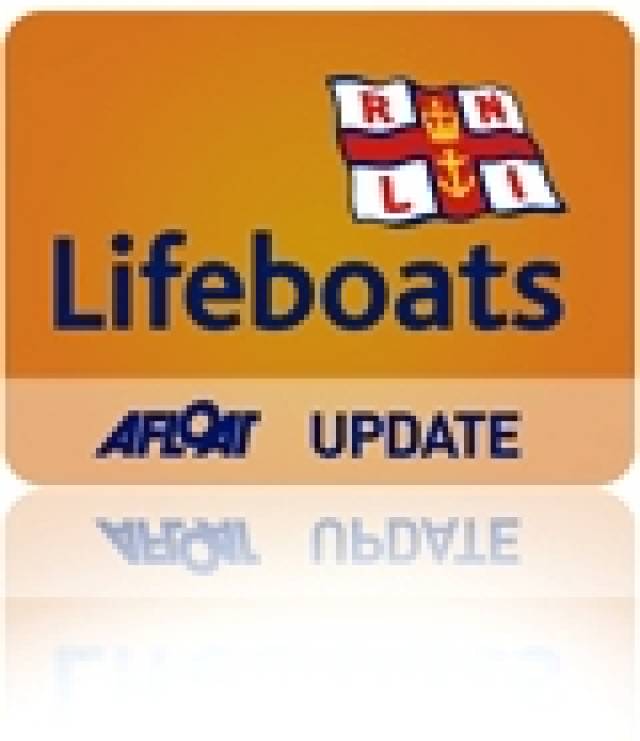#rnli – Howth RNLI rescued a dog after he fell 200 feet from a cliff in north county Dublin yesterday.
The alarm was raised at approximately 4.30pm by a member of the public who was walking along the cliff path at Howth Head and noticed the dog's distressed owners.
The lifeboat helmed by Dave Howard and with fellow volunteer crew members Lorcan Dignam and Darryl Reamsbottom on board, was launched within minutes and went to the scene where the crew observed that Luca, a Pointer had fallen from the highest point of the cliff at the nose of Howth.
In what was a challenging rescue lasting about 30 minutes, two of the lifeboat crew with the guidance of Luca's owners at the top of the cliff, climbed over rocks and made their way to the frightened animal.
Having successfully recovered Luca, the crew then had to carefully work their way back to the lifeboat through the rocky boulders.
While returning to the lifeboat station, the inshore lifeboat crew came across a broken down jet-ski. The lifeboat towed the vessel and its owner safely back to a slipway at Howth Harbour.
Speaking following the call out, Howth RNLI Helm Dave Howard said: 'This was one very lucky dog. It was a 200ft drop and we didn't expect to have such a happy outcome to this rescue. Needless to say the owners were delighted to have Luca who was frightened and shivering but without harm, safely returned to them'.
This was the first of two call outs for Howth RNLI yesterday. The second came at 5.40pm when the lifeboat was requested to launch again following a report that a man who had been swimming across the channel to Malahide had got into difficulty.
The inshore lifeboat helmed this time by Lorcan Dignam and with crew members Tim McDonnell and Joss Walsh on board made its way to the scene where the swimmers having being dragged to shore by two friends who had raised the alarm, was located on the south eastern tip of Donabate Strand.
The lifeboat crew assessed the man and administered first aid on the scene before he was airlifted to hospital by the Irish Coast Guard
































































